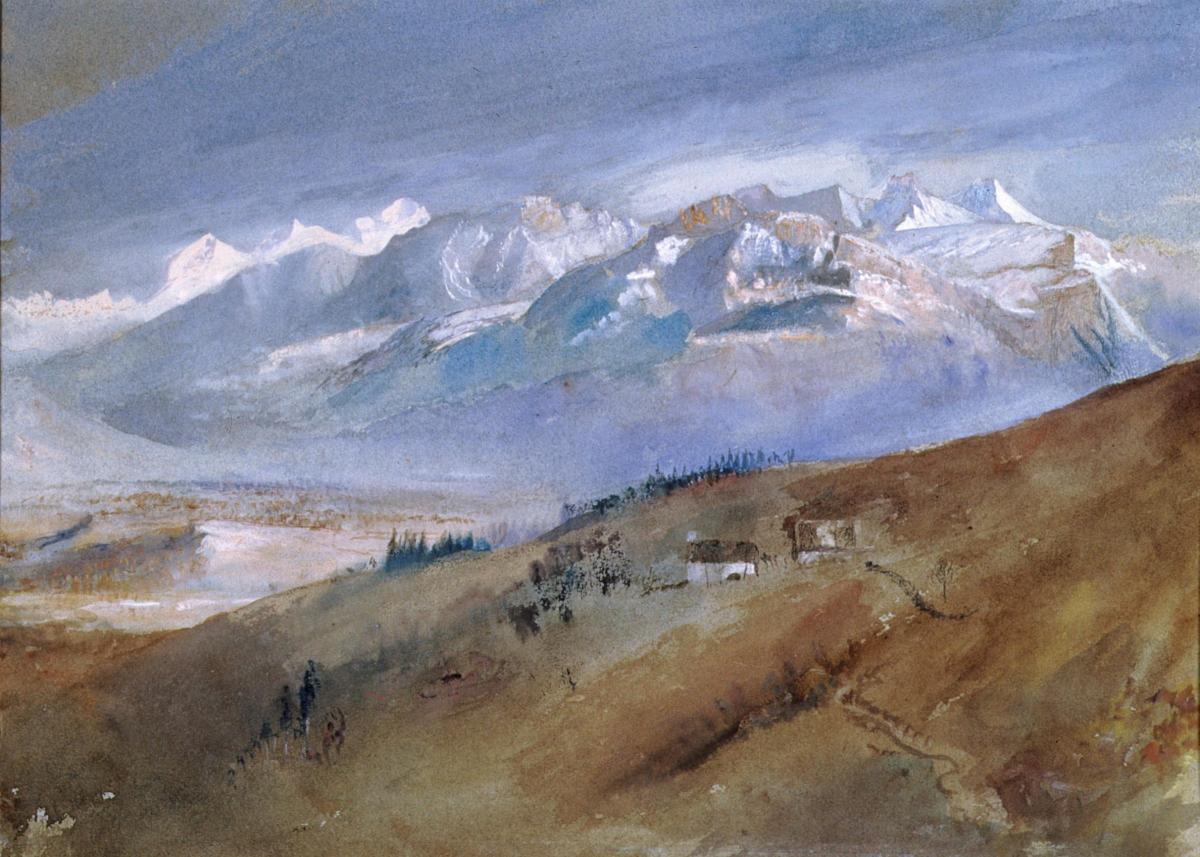ABBOT Hall Art Gallery’s summer exhibition is one of its biggest ever.
Easy to say, maybe, but true.
Opening on Friday (July 12), it includes nigh on 135 works and stretches across six of Abbot Hall's revered galleries.
As well as 'biggest', Ruskin, Turner and the Storm Cloud promises to be one of the best, creatively speaking too, that has graced the walls of the Kendal gallery.
Plus, extra special with it taking place during the 200th anniversary year of John Ruskin’s birth.
John Ruskin, who died aged 81 in 1900, was a great art historian and became an increasingly radical voice during the Victorian era, as well as an art patron, draughtsman, watercolourist, prominent social thinker and philanthropist. Born in London, he spent the last 28 years of his life at his inspirational Coniston home, Brantwood.
JMW Turner (1775-1881) was a landscape painter, traveller, poet and teacher. Many people consider him the first modern painter. Ruskin was a terrific advocate of the work of Turner and described him as "the greatest of the age."
Ruskin, Turner and the Storm Cloud examines Ruskin’s relationship with Turner’s work and the impact Ruskin had in highlighting climate change.
Abbot Hall is partnering with York Art Gallery and University of York on the exhibition. Works from both Abbot Hall and the York art house will go on show alongside substantial loans from national and regional collections.
The show will feature watercolours, drawings and a portrait of Ruskin from the National Portrait Gallery, made in the aftermath of his first serious mental problems.
In 1884 Ruskin wrote about an encroaching Storm Cloud - a darkening of the skies that he attributed to the belching chimneys of the modern world. The imagery also allowed him to articulate his ongoing mental struggles.
Ruskin’s anxiety about darkening skies and polluted storm clouds is contrasted with his early interest in Turner’s luminous pictures.
The exhibition contains a substantial display of Turner’s watercolours, demonstrating his evolving style, and his creation of highly-finished sample studies of British and alpine landscapes.
His The Passage of Mount St Gothard (1804) is just one of the breathtaking paintings on show.
To tie in with the exhibition, York Art Gallery and Abbot Hall have commissioned contemporary Royal Academician Emma Stibbon to create new work inspired by Ruskin’s and Turner’s visits to the Alps. The works explore our changing landscape as a result of climate change observed by Ruskin in his Storm Cloud lectures.
Emma's work shows how the natural environment has been impacted by climate change during the past two centuries and include a series of large works on paper.
Helen Watson, director of programmes for Lakeland Arts - which owns Abbot Hall - said that for those who have an interest in Ruskin and Turner, the exhibition is a must-see: "This year is hugely significant in celebrating Ruskin and we're delighted to have this landmark exhibition at Abbot Hall during the 200th anniversary of his birth. It’s particularly apt that the exhibition takes place in Cumbria - the home of Ruskin and the place he found most inspiration.”
The exhibition has an accompanying publication, bringing together a collection of new essays by artists, climate change specialists, art historians and curators.
Hugely important, the exhibition also holds extra significance for Helen who after more than a decade of sterling work at the highly regarded regional arts organisation, leaves Abbot Hall for pastures anew: The Tetley at Leeds, a pioneering centre for contemporary art located in the stunning art deco headquarters of the former Tetley Brewery.
"I am sad to be leaving Lakeland Arts after 11 years but I'm delighted to see this ambitious exhibition come to fruition thanks to the exhibition partners and fantastic team at Abbot Hall Art Gallery. It’s definitely a must see for the summer."
For further information about Ruskin, Turner and the Storm Cloud go online at www.abbothall.org.uk/exhibitions/Ruskin-Turner.






Comments: Our rules
We want our comments to be a lively and valuable part of our community - a place where readers can debate and engage with the most important local issues. The ability to comment on our stories is a privilege, not a right, however, and that privilege may be withdrawn if it is abused or misused.
Please report any comments that break our rules.
Read the rules here